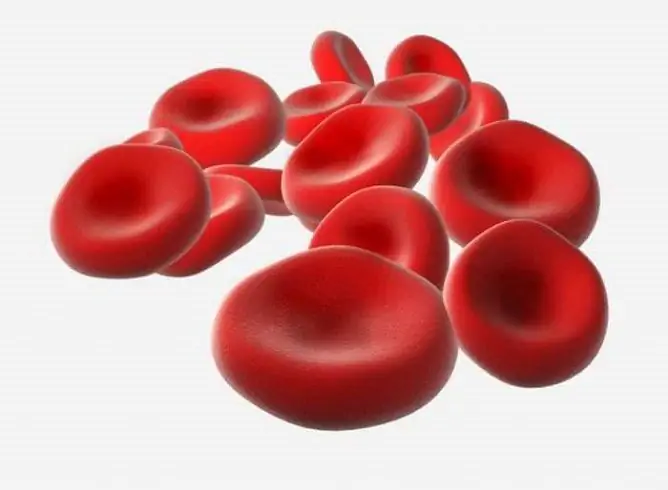- Author Rachel Wainwright [email protected].
- Public 2023-12-15 07:39.
- Last modified 2025-11-02 20:14.
Analysis for syphilis: what is called, how much is done, when to take
The content of the article:
- Indications for laboratory diagnosis of syphilis
- Preparation for analysis, possible errors, shelf life of the result
- Types of tests for syphilis
-
Syphilis
- Ways of transmission
- Primary syphilis
- Secondary syphilis
- Tertiary syphilis
- Atypical syphilis
- Congenital syphilis
An analysis for syphilis is prescribed if there are signs indicating the possibility of a disease, for preventive purposes (the study is carried out as part of a professional examination of health workers, workers in child care facilities and catering establishments, during hospitalization, registration in the pool, etc.), and it can also be taken by as desired, if there is a suspicion of possible infection.
Syphilis is a chronic systemic infectious disease caused by treponema pallidum (Treponema pallidum).
The diagnosis is established on the basis of anamnesis data, existing clinical manifestations, laboratory results.
The doctor who prescribes the referral will explain which tests to take, what they show, how long the result will be ready.
Indications for laboratory diagnosis of syphilis
Tests for syphilis can be taken anonymously, but if there is a need for a document certifying the absence of syphilis, it is recommended to conduct the test under your own name, since anonymous results are not accepted by official institutions.

Treponema pale - the causative agent of syphilis Treponema pale - the causative agent of syphilis
Medical indications for testing for syphilis are:
- the presence of clinical signs of syphilis (detection of genital ulcers, syphilis, etc.);
- close household contact or sexual relations with a patient with syphilis;
- identifying other sexually transmitted infections in the patient;
- the birth of a child from a mother with syphilis;
- planning pregnancy;
- registration during pregnancy;
- examination before planned surgery.
Preparation for analysis, possible errors, shelf life of the result
Blood for analysis for syphilis is taken in the morning on an empty stomach (the pause after eating should be 8-12 hours). On the eve of the study, fatty foods and alcoholic beverages should be excluded from the diet. It is not recommended to smoke before taking the test. Before taking blood for analysis, it is allowed to drink plain water.
False positive results are possible in pregnancy, tuberculosis, diabetes mellitus, cancer, drug and alcohol addiction, viral hepatitis, infectious mononucleosis, after vaccination.
If a negative result is obtained, early primary and late tertiary syphilis cannot be ruled out. If a questionable result is obtained, the study is recommended to be repeated after 10-14 days. If antibodies to treponema pale are found in a patient, it is recommended to conduct a quantitative study by PCR (polymerase chain reaction).
The shelf life of the test result for syphilis depends on the purpose for which the study was conducted. So, when researching in the framework of regular professional examination of employees, the result of the research is usually valid for a year, for pregnant women - for one trimester, for people at risk (for example, injection drug users or people employed in the sex industry) the period may be shorter …
Types of tests for syphilis
There are two types of tests for syphilis.
- Non-treponemal. These tests detect antibodies to lipids and phospholipids from the patient's damaged cells. For this reason, the positive result of these methods may be due not only to the presence of syphilis, but also to other pathologies. Non-treponemal tests are commonly used for screening, monitoring treatment and cure rates, as they allow for urgent analysis. If you receive a positive result of a non-treponemal test, it is recommended to pass a detailed test for syphilis. These include the Wasserman reaction, anticardiolipin test, etc.
- Treponemal. These tests are more accurate, but also more difficult, so they are used to confirm a positive result of screening tests. These studies have a lower false-positive rate. Treponemal analyzes include passive hemagglutination reaction, enzyme-linked immunosorbent assay (ELISA), immunoblotting, immunofluorescence reaction (RIF), immobilization reaction.
The transmission of syphilis in the urine has not been proven, the pathogen is detected in the patient's saliva. The main laboratory methods for diagnosing syphilis include PCR, as well as serological research methods: RMP (microprecipitation reaction), RIF, ELISA, RPHA (direct hemagglutination reaction). In addition, microscopy, cultural diagnostics, etc. can be used.

The RPR method is most often used in the primary diagnosis of syphilis - the anticardiolipin test The RPR method is most often used in the primary diagnosis of syphilis - the anticardiolipin test
The anti-cardiolipin test (RPR) is a modern analogue of the Wasserman reaction, which was widely used to detect syphilis in the past, and is now outdated due to frequent errors. The method consists in detecting antibodies of the IgG and IgM class to the lipoid and lipoprotein-like material released from the damaged cells of the patient. In patients with primary syphilis, antibodies are determined in 70-80% of cases, in patients with secondary or early latent syphilis - in almost 100% of cases. In 90-98% of patients, after treatment, the results of the anticardiolipin test become negative. Since this test is not specific, in some cases it is possible to obtain false positive results (for example, in case of autoimmune diseases).
Laboratory results are usually ready the next business day after donating blood (production time may vary depending on the methods used). If you need to get a quick result, they resort to express tests.
Syphilis
Syphilis is a chronic venereal disease that has three stages that differ from each other: primary, secondary and tertiary. Currently, primary and secondary syphilis are successfully treated; at the tertiary stage, irreversible changes develop in the body.
Ways of transmission
The disease is transmitted mainly sexually, it is also possible infection through blood (with blood transfusion, in injection drug addicts), by household (when using joint razors, toothbrushes, as well as when using other common household items with a sick tertiary syphilis with open syphilitic ulcers or gummas), only if there is a hard chancre in the oral cavity. It is possible to infect a child at the prenatal stage of development, during breastfeeding (even in the absence of visible lesions of the mother's mammary gland). With transplacental transmission of infection from a sick mother, fetal death, premature birth, and the birth of a child with congenital defects are possible. At risk is medical personnel who can become infected during diagnostic or treatment activities.
Primary syphilis
On average, the incubation period for syphilis is three weeks, during which tests can show a negative result even if there is an infection. After the incubation period, a painless ulceration with a dense bottom and raised edges, the so-called hard chancre (primary syphiloma), occurs at the site of the infectious agent. In addition, regional lymphadenitis develops. A shortening of the incubation period, as a rule, is observed in the case of simultaneous infection of a person from two or more sources, lengthening - when taken after infection with antibacterial drugs for another reason.
The duration of primary syphilis is 6-7 weeks, it ends with spontaneous resolution of the hard chancre and, if treatment has not been carried out at this stage, its transition to another stage.
Secondary syphilis
The beginning of this stage is characterized by the appearance on the patient's skin and mucous membranes of specific rashes (roseolous, pustular, papular), the so-called syphilides. With secondary syphilis, focal hair loss, damage to the nervous system, an increase in body temperature to subfebrile numbers, weakness, fatigue, runny nose, cough, conjunctivitis can be observed. The rash disappears after a few weeks, after which the disease enters a latent phase, which can last from several months to several years (in some cases, 10-20 years or more). During the latent phase, when the patient's immunity is weakened, exacerbations are possible. With inadequate therapy or untreated secondary syphilis, the disease progresses to the stage of tertiary syphilis.
Tertiary syphilis
At the stage of tertiary syphilis, all organs and tissues are affected. On the skin, internal organs, syphilitic gummas are formed (nodes in the tissues that irreversibly destroy them and are resolved with the formation of rough scars). In patients with tertiary syphilis, the nervous system (neurosyphilis) is often affected, paresis, paralysis, memory impairment, attention, thinking are observed. Exacerbations of the disease are usually associated with a decrease in the patient's immunity. In the absence of treatment at this stage of the disease, the patient may develop complications and may be fatal.

Secondary syphilis is characterized by syphilis - skin rashes Secondary syphilis is characterized by syphilis - skin rashes
Atypical syphilis
In rare cases, untreated patients with secondary syphilis remain asymptomatic carriers of treponema pallidum for the rest of their lives, and they do not develop the lesions characteristic of tertiary syphilis.
In some cases, there are no manifestations of primary syphilis (for example, when a person is infected during a blood transfusion from an infected donor, that is, when the pathogen enters the bloodstream). In addition, this happens when a hard chancre is localized in places where it is difficult to find it (for example, on the cervix).
Congenital syphilis
The clinical picture of congenital syphilis is due to the action of pale treponema on the tissue of the developing fetus. It is manifested by congenital deafness, hypoplasia of the teeth, parenchymal syphilitic keratitis. Even with the destruction of the pathogen in the body of a patient with a congenital form of syphilis, defects formed in the prenatal period remain.
YouTube video related to the article:

Anna Aksenova Anna Aksenova Medical journalist About the author
Education: 2004-2007 "First Kiev Medical College" specialty "Laboratory Diagnostics".
Found a mistake in the text? Select it and press Ctrl + Enter.






